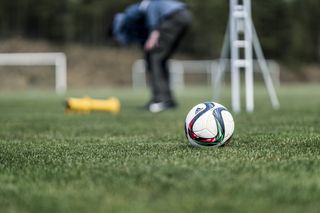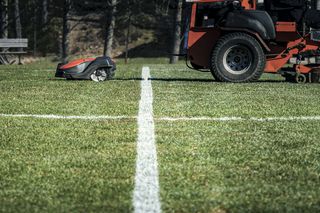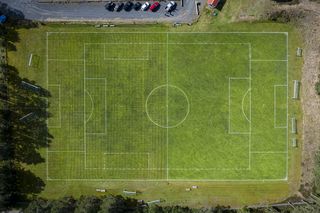To irrigate or not to irrigate, that’s the question
Making sure that the pitch gets the right amount of water is a vital part of keeping it in perfect condition. Being able to tell when and how often the pitch needs water can save you a lot of time and money, as well as eliminating the kinds of problems that can result in even more costly and time-consuming extra work. The question is: are we, in general, irrigating too much?
“A huge amount of money could be saved”
Simeon Liljenberg is Head Groundsman at the Swedish national football stadium, Friends Arena. According to him, many groundskeepers should consider cutting down on irrigation. “A lot of pitches get way too much water. As a matter of fact, a huge amount of money could be saved by drastically reducing irrigation,” Simeon says. Over-irrigation is bad from three perspectives. Firstly, we should all use water wisely, since there could be a shortage of water in many parts of the world in the future. Secondly, irrigation often takes a lot of time and effort: particularly when it comes to moving around, setting up and adjusting equipment. Finally, a constant supply of plenty of water leads to shallow root systems, which can increase weed growth. The basic rule is: irrigate a lot, but not very often.

Get to know your pitch properly
It’s important to study your pitch and get to know it really well. “It’s all about look and feel,” says Simeon. He recommends that you take a walk across the pitch, back and forth, to find out how it feels. Is it soft and maybe over-irrigated? And what do the grass plants look like? Are they limp and if so, is it a consequence of overwatering or maybe bad fertilisation? Observations like these give you a good foundation for further investigation and the potential to establish good irrigation routines.
Start relying more on facts
It’s time to stop guessing and believing in old “truths” about how frequently a pitch should be irrigated. “Every groundskeeper should use a soil moisture meter,” says Simeon. It’s a rather small investment that really could help save a lot of time and money. “Irrigating a pitch over-night could cost hundreds of euro. So, I would say that the pay-off time for a soil moisture meter is normally just a couple of weeks.” The moisture content should be 20–25%, depending on the foundation of the pitch. For example, a pitch lying on a sand bed often requires more water, which means a slightly higher moisture content. “All football pitches are different. It's all about finding the perfect moisture level for each pitch.”

What problems can too much water lead to?
By irrigating too often you’ll acclimatise the pitch to constant watering. This means that the roots stop growing, since they don’t have to push themselves deeper down the soil to find the water they need. Too much water could make the grass begin to rot. There’s also a risk that important nutrients will be leached from the soil, inhibiting root growth. A too soft surface makes the pitch less resistant to wear and could result in severe damage that takes a long time to restore.
What can you do if the pitch is too wet and thatchy?
The two best ways of curing a waterlogged football pitch are aerating and topdressing. Aerate with large, long spikes for vertical draining. This makes the water on the surface disappear and go deep into the soil. It also increases oxygenation, which causes the lawn to dry. “This is a very effective way to save a pitch that has got slightly more water than it can handle by itself,” Simeon says.

| About Simeon Lilienberg |
|---|
|
















